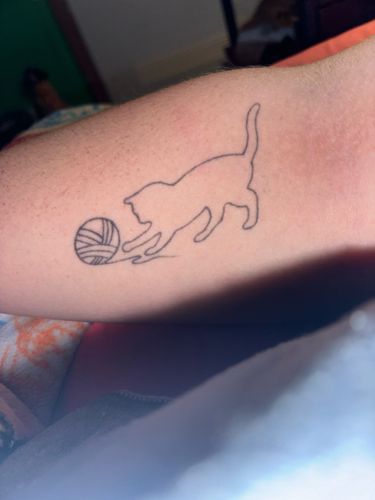Not a bug or insect; it is a domestic cat (Felis catus) depicted as a tattoo.
Scientific Name: Felis catus
Order & Family: Carnivora, Felidae
Size: Typically 23–25 cm (9.1–9.8 in) tall at the shoulder and 46 cm (18 in) long (head to body), with a 23–25 cm (9.1–9.8 in) tail. Weight usually ranges from 3.6 to 4.5 kg (7.9–9.9 lb), but can vary greatly by breed and individual.

Natural Habitat
Predominantly domestic environments, global distribution alongside human habitation. Can also be found in feral populations.
Diet & Feeding
Strict carnivores. Their diet primarily consists of meat from small prey animals such as rodents, birds, fish, and insects in the wild. Domestic cats are typically fed commercially prepared cat food or a veterinarian-approved raw/cooked meat diet.
Behavior Patterns
Crepuscular predators, often most active at dawn and dusk. Known for their agility, hunting prowess, territorial nature, and grooming habits. Communicate through various vocalizations, body language, and scent marking. Play behavior, particularly with objects like yarn balls, mimics hunting. Note: The image shows a tattoo of a cat playing with a ball of yarn, not an actual cat.
Risks & Benefits
Benefits: Companionship, emotional support, pest control (hunting rodents). Risks: Can carry diseases (e.g., toxoplasmosis, rabies), cause allergic reactions, potential predators of local wildlife (especially songbirds and small mammals if allowed outdoors unsupervised).
Identified on: 9/5/2025